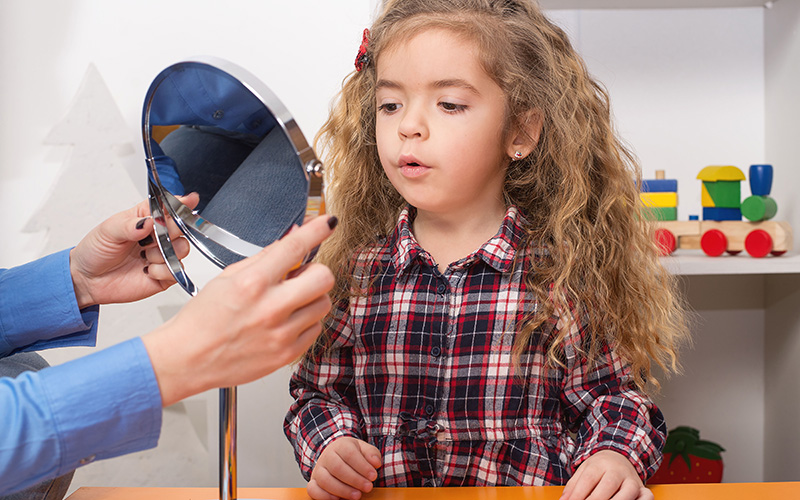
Have you ever wondered how different speech sounds are made in our mouth and why some are easier to learn than others? All babies are born with the ability to hear hundreds of sounds, many of which aren’t used in their home languages. As they grow up hearing the common sounds of their language, the brain starts to prune away the ability to hear and produce the less common sounds. This is why it can be hard for English speakers to learn how to roll their “r” or for Japanese speakers to tell the difference between “r” and “l” once they’re no longer children.
Our brain becomes “wired” for the language or languages it has heard by about the age of 10 – 12. That’s why it’s important children are exposed to learning new languages or continuing to hear their family’s first language long before high school.
Sounds usually mastered
by age three
After vowels, some of the earliest sounds babies learn are p, b, t, d, k and g.
These sounds are pairs produced in the same place in the mouth, only differing on
whether the vocal chords vibrate or not. For example, “p” and “b” are both made
by “popping” your lips and the “b” vibrates your vocal chords while the “p”
does not. The “t” and “d” are made by placing your tongue behind your front
teeth and the “k” and “g” by elevating the middle of your tongue. Can you tell
which ones use your vocal chords and which ones don’t? These sounds are some
examples of sounds that children have usually mastered by age three.
More difficult
sounds
Other pairs include “f/v,” “sh/ch,” and “s/z,” but these sounds often aren’t
mastered for a few more years. Some sounds are a lot easier to explain than
other sounds. For example, both “th” and “r” are considered later-arriving
sounds. However, the “th” is much easier to teach—we can help children learn
how to put their tongue on their front teeth. The “r” is much more difficult—try
making an “r” sound and then describe what your tongue is doing. The
explanation isn’t as clear—the back of the tongue generally elevates and
flattens or the tongue tip sweeps back, but this can be a tough concept to
explain.
If you are concerned about how your child is producing sounds, ask your doctor for a referral to make an appointment to be assessed by a speech therapist!
By Barbara Bryant, CCC-SLP, Children’s Therapy

